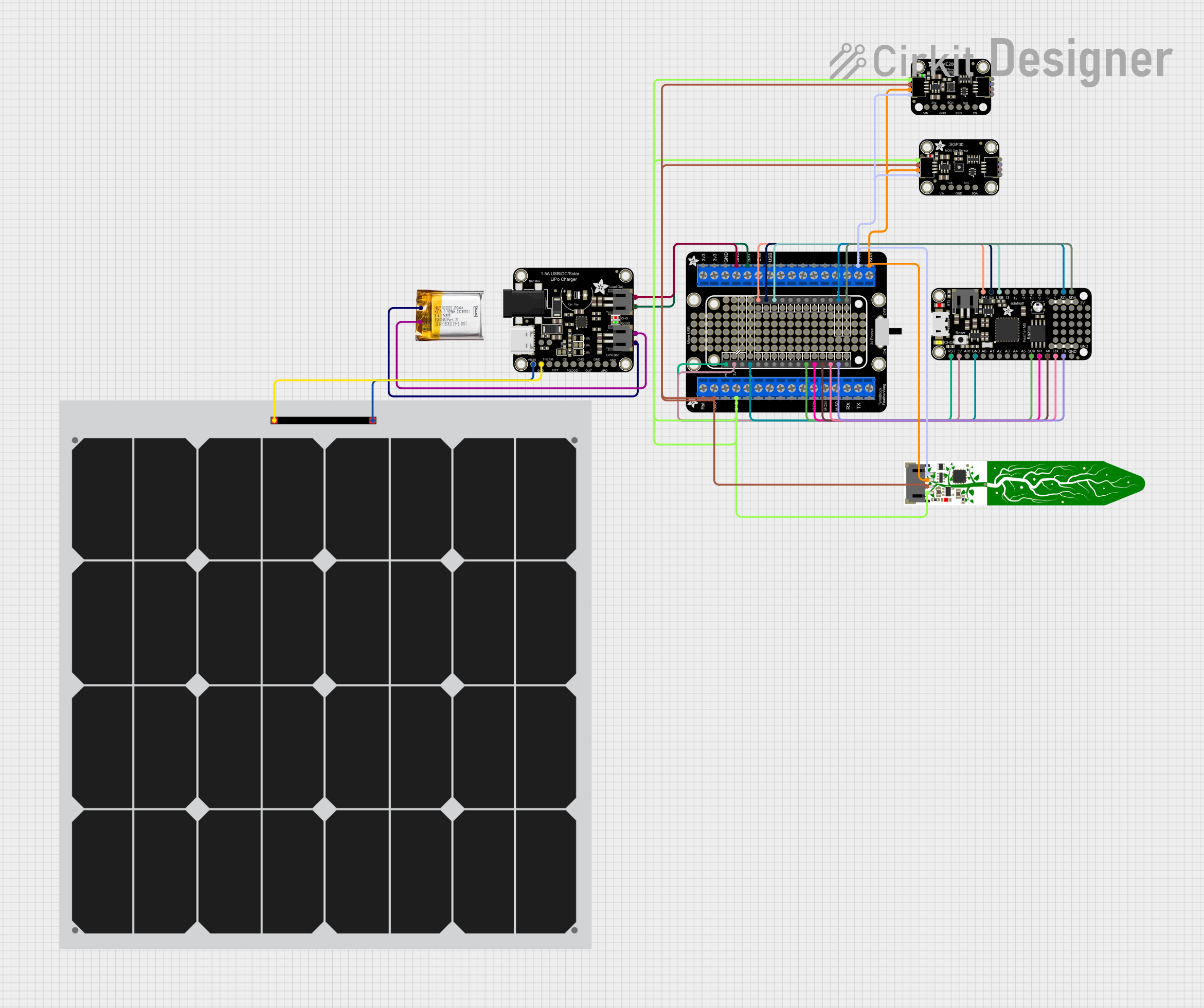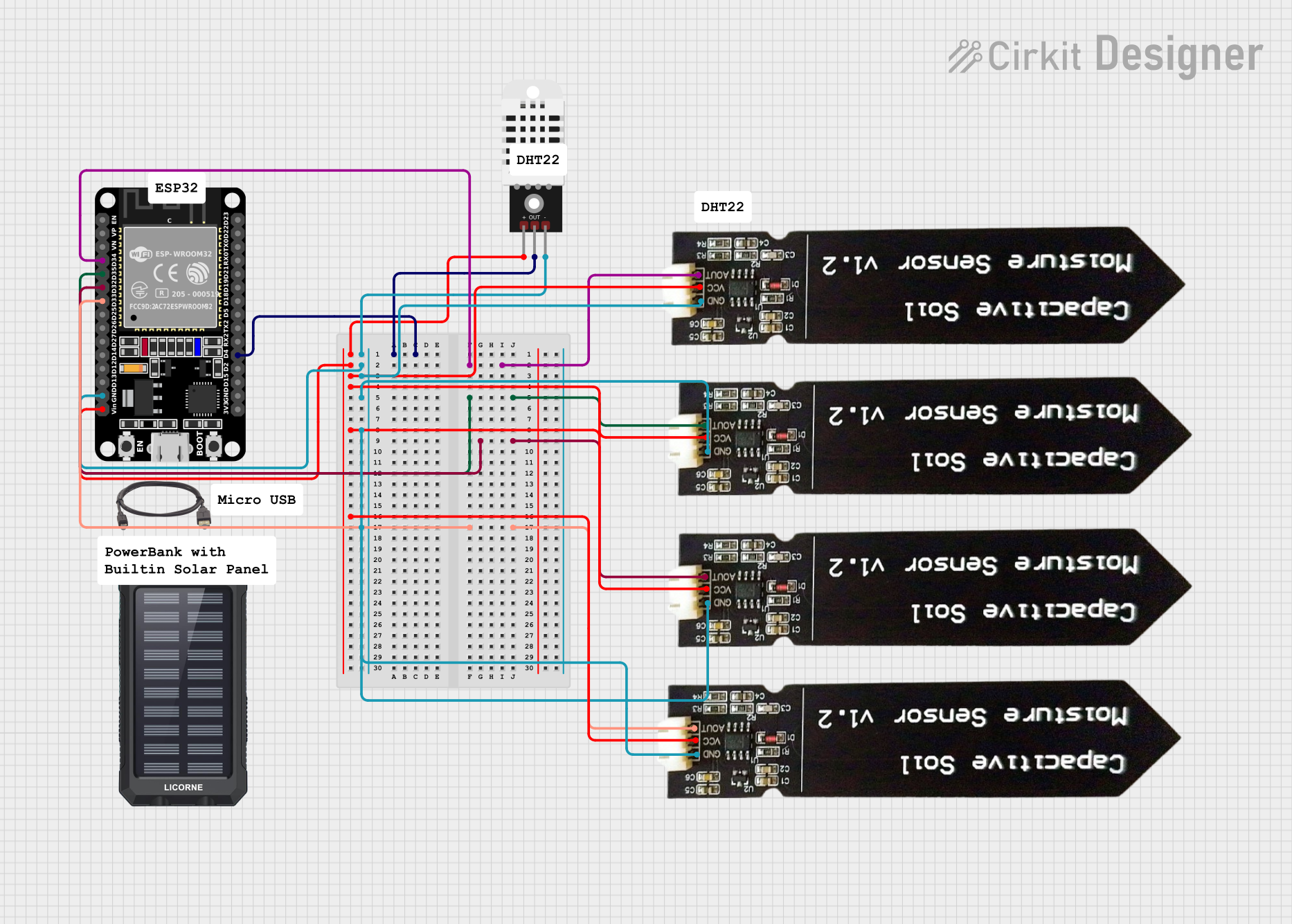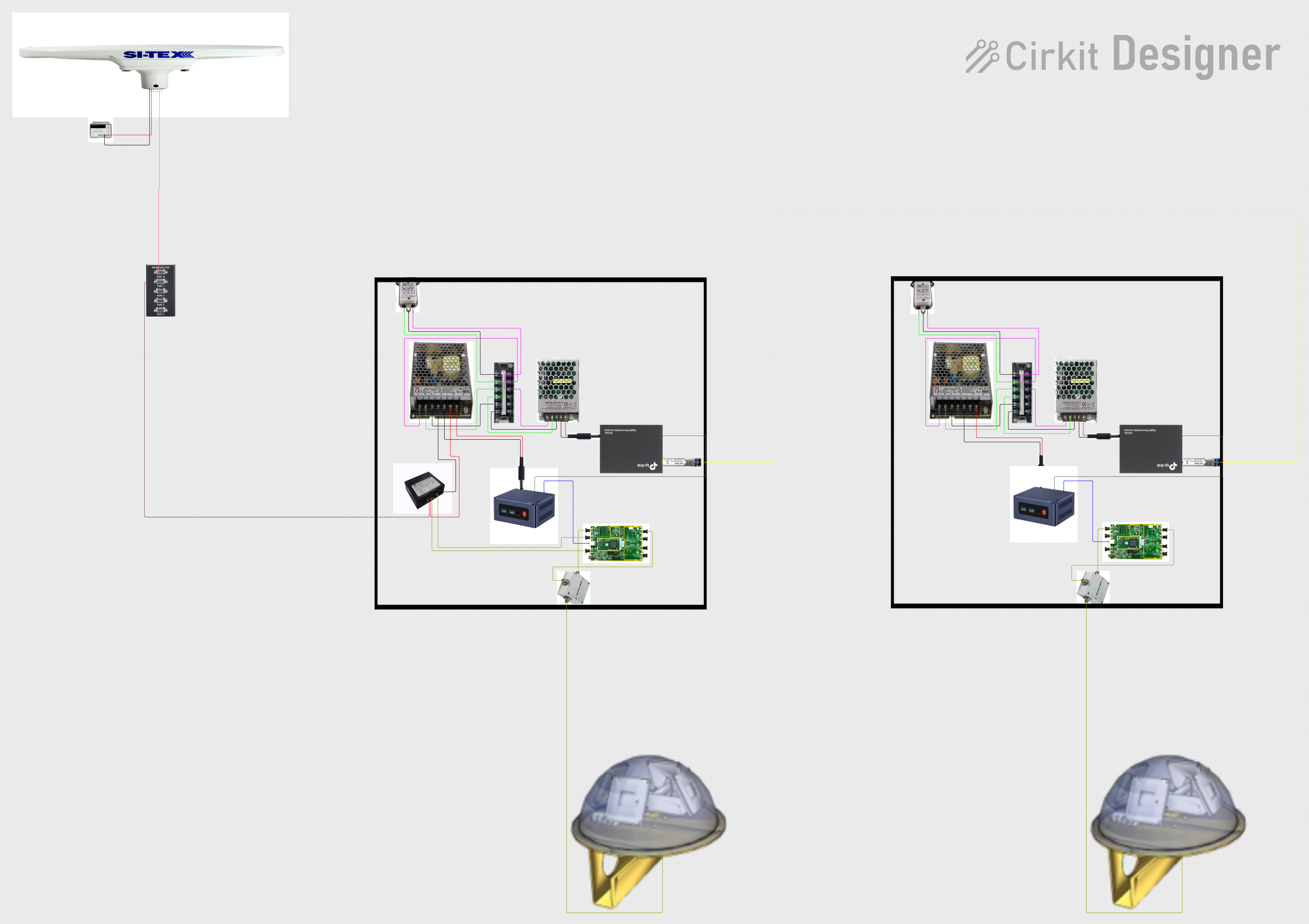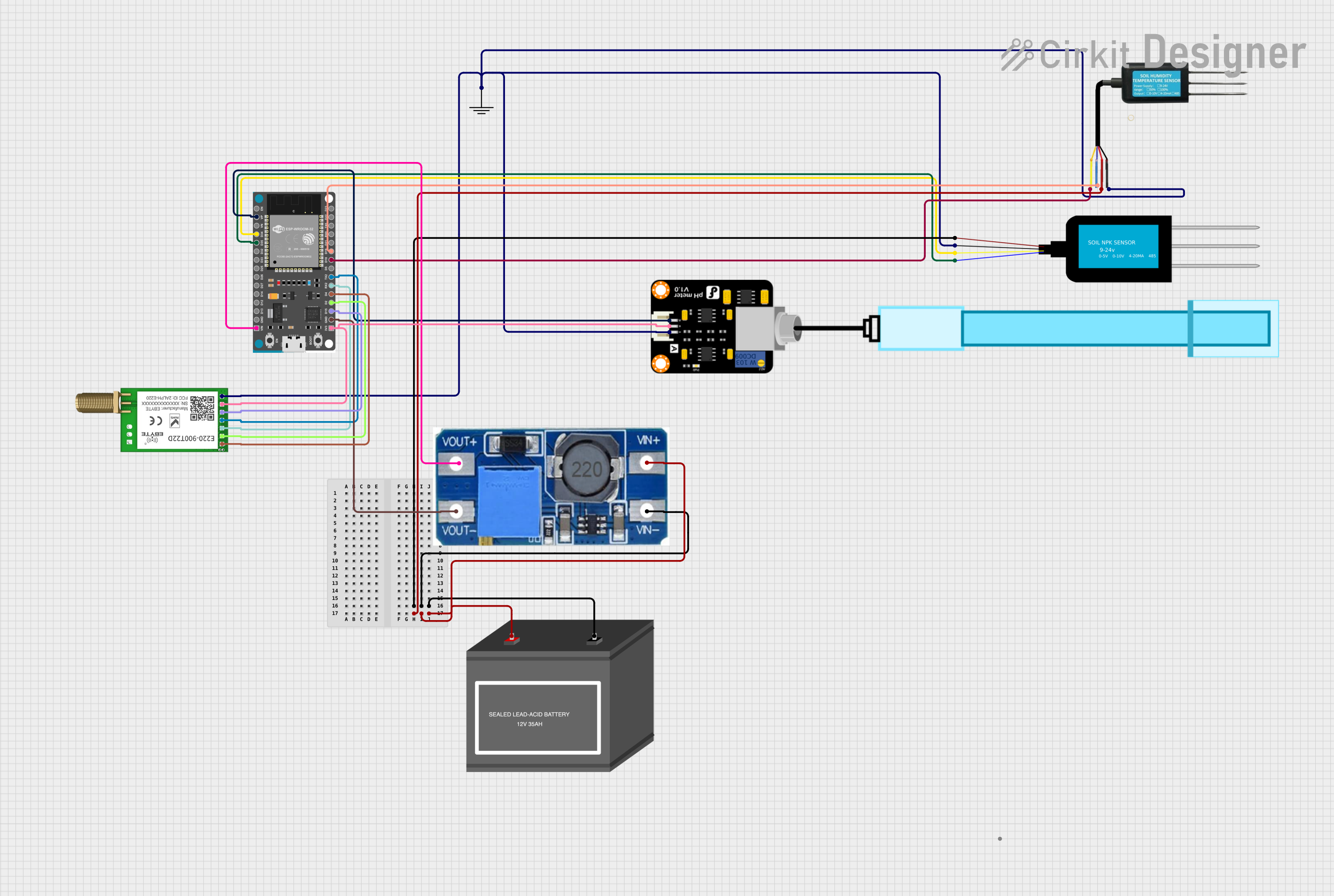
How to Use Earth Terminal: Examples, Pinouts, and Specs

 Design with Earth Terminal in Cirkit Designer
Design with Earth Terminal in Cirkit DesignerIntroduction
An Earth Terminal, also known as a ground terminal, is a crucial component in electrical and electronic circuits. It serves as a connection point that is linked to the ground, ensuring safety by dissipating excess electrical energy. This helps in preventing electrical shocks, protecting equipment, and maintaining the stability of the circuit.
Explore Projects Built with Earth Terminal

 Open Project in Cirkit Designer
Open Project in Cirkit Designer
 Open Project in Cirkit Designer
Open Project in Cirkit Designer
 Open Project in Cirkit Designer
Open Project in Cirkit Designer
 Open Project in Cirkit Designer
Open Project in Cirkit DesignerExplore Projects Built with Earth Terminal

 Open Project in Cirkit Designer
Open Project in Cirkit Designer
 Open Project in Cirkit Designer
Open Project in Cirkit Designer
 Open Project in Cirkit Designer
Open Project in Cirkit Designer
 Open Project in Cirkit Designer
Open Project in Cirkit DesignerCommon Applications and Use Cases
- Safety Grounding: Protects users and equipment from electrical faults.
- Signal Grounding: Provides a common reference point for various signals in a circuit.
- Electromagnetic Interference (EMI) Reduction: Helps in minimizing noise and interference in sensitive electronic circuits.
- Lightning Protection: Safeguards structures and equipment from lightning strikes by providing a path to the ground.
Technical Specifications
Key Technical Details
| Parameter | Value |
|---|---|
| Voltage Rating | Up to 600V |
| Current Rating | Up to 30A |
| Material | Copper or Brass |
| Insulation | PVC or Nylon |
| Mounting Type | Screw or Solder |
| Terminal Size | 4mm to 10mm |
| Operating Temperature | -40°C to 85°C |
Pin Configuration and Descriptions
| Pin Number | Description |
|---|---|
| 1 | Ground Connection (to Earth) |
| 2 | Circuit Ground (to Device) |
Usage Instructions
How to Use the Component in a Circuit
- Identify the Ground Point: Determine the point in your circuit that needs to be grounded.
- Connect the Earth Terminal: Securely connect the Earth Terminal to the identified ground point using a screw or solder, depending on the mounting type.
- Connect to Earth: Attach the other end of the Earth Terminal to a reliable earth ground, such as a grounding rod or a grounded metal structure.
Important Considerations and Best Practices
- Ensure Proper Connection: Make sure all connections are secure and free from corrosion.
- Use Appropriate Tools: Use the correct tools for mounting and connecting the Earth Terminal to avoid damage.
- Regular Inspection: Periodically check the Earth Terminal and connections for wear and tear.
- Compliance: Ensure that the installation complies with local electrical codes and standards.
Troubleshooting and FAQs
Common Issues Users Might Face
- Loose Connections: Can lead to ineffective grounding and potential safety hazards.
- Corrosion: Can degrade the connection quality over time.
- Improper Installation: Can result in poor grounding and increased risk of electrical faults.
Solutions and Tips for Troubleshooting
- Tighten Connections: Regularly check and tighten all connections to ensure they are secure.
- Clean Contacts: Use a contact cleaner to remove any corrosion or debris from the connections.
- Verify Grounding: Use a multimeter to check the continuity between the Earth Terminal and the ground to ensure proper grounding.
FAQs
Q1: Can I use an Earth Terminal with an Arduino UNO?
A1: Yes, you can use an Earth Terminal with an Arduino UNO to ensure proper grounding and reduce noise in your circuit.
Q2: How do I know if my Earth Terminal is working correctly?
A2: You can use a multimeter to check the continuity between the Earth Terminal and the ground. A low resistance reading indicates a good connection.
Q3: What materials are best for Earth Terminals?
A3: Copper and brass are commonly used materials due to their excellent conductivity and resistance to corrosion.
Q4: Can I use an Earth Terminal for high-voltage applications?
A4: Yes, but ensure that the Earth Terminal's voltage and current ratings are suitable for your specific application.
Example Code for Arduino UNO
Here is an example of how to use an Earth Terminal with an Arduino UNO to ground the circuit and reduce noise:
// Example code to demonstrate grounding with an Earth Terminal
// Connect the Earth Terminal to the GND pin of the Arduino UNO
void setup() {
// Initialize serial communication for debugging
Serial.begin(9600);
// Set pin modes
pinMode(LED_BUILTIN, OUTPUT); // Built-in LED pin as output
pinMode(A0, INPUT); // Analog pin A0 as input
}
void loop() {
// Read analog value from pin A0
int sensorValue = analogRead(A0);
// Print the sensor value to the serial monitor
Serial.println(sensorValue);
// Simple condition to turn on the LED if sensor value is above a threshold
if (sensorValue > 500) {
digitalWrite(LED_BUILTIN, HIGH); // Turn on the LED
} else {
digitalWrite(LED_BUILTIN, LOW); // Turn off the LED
}
// Small delay for stability
delay(100);
}
In this example, the Earth Terminal is connected to the GND pin of the Arduino UNO, providing a stable ground reference for the circuit. This helps in reducing noise and improving the accuracy of analog readings.
This documentation provides a comprehensive overview of the Earth Terminal, including its technical specifications, usage instructions, and troubleshooting tips. Whether you are a beginner or an experienced user, this guide will help you effectively utilize the Earth Terminal in your projects.